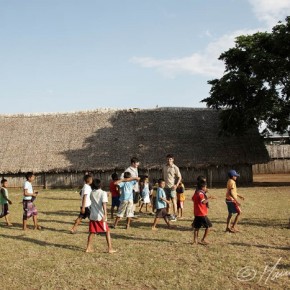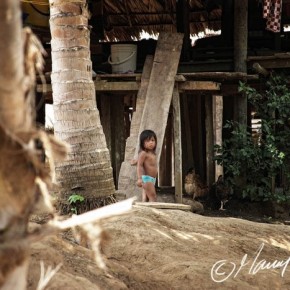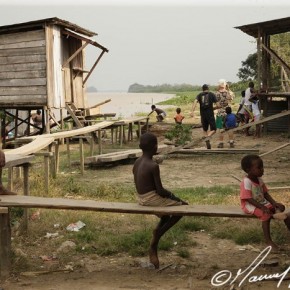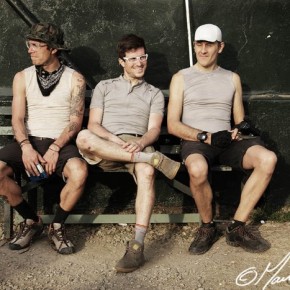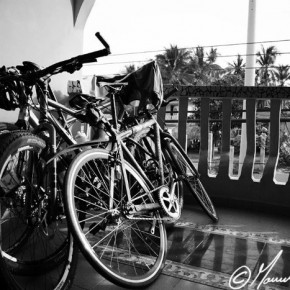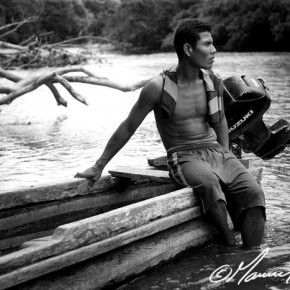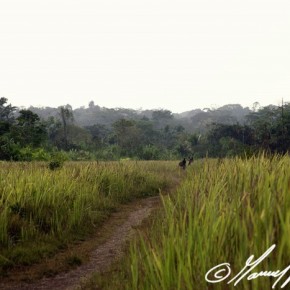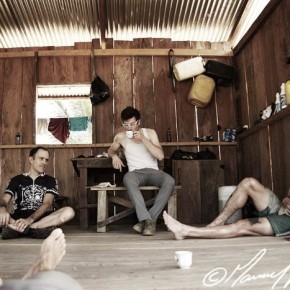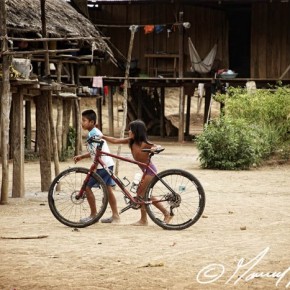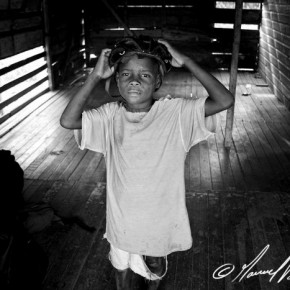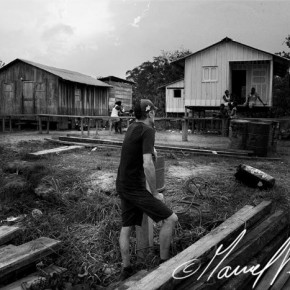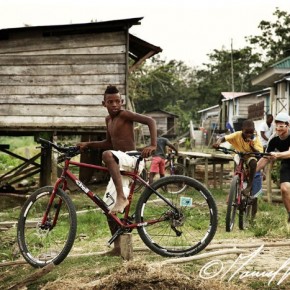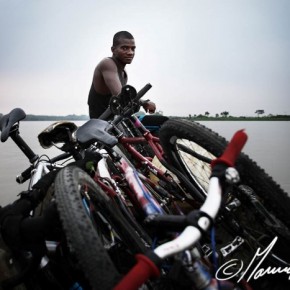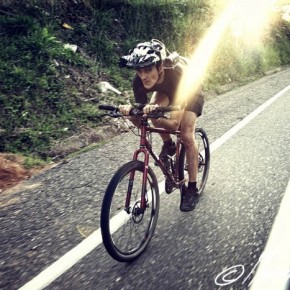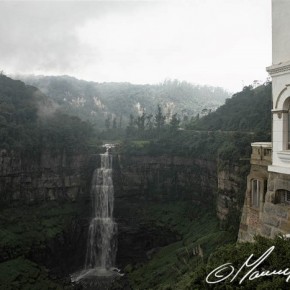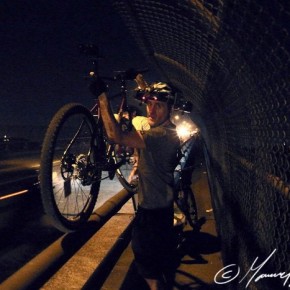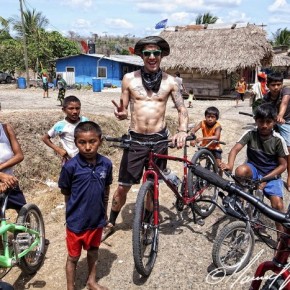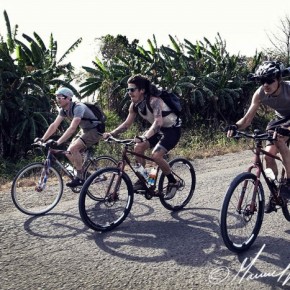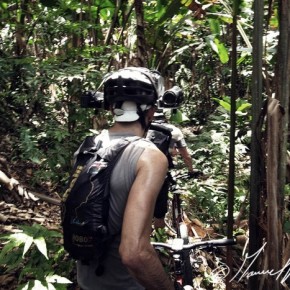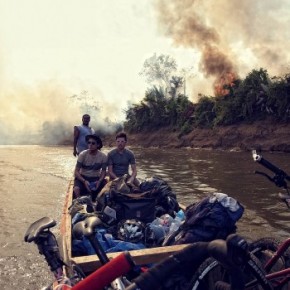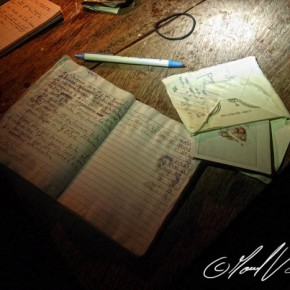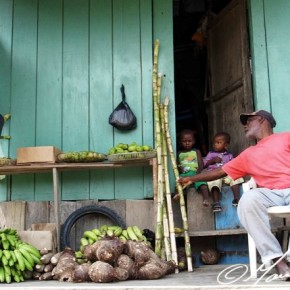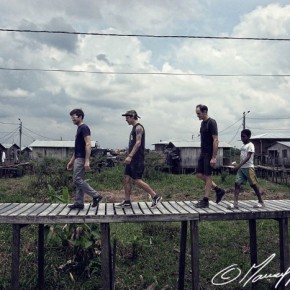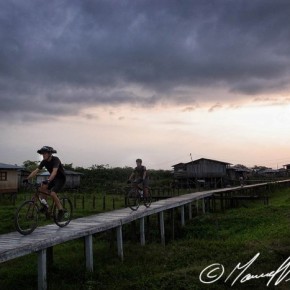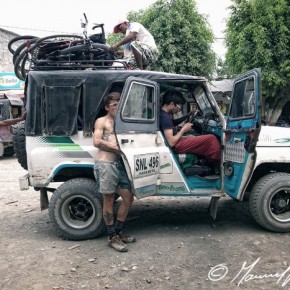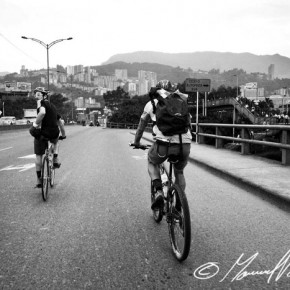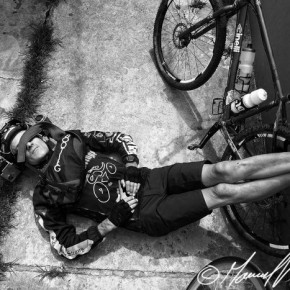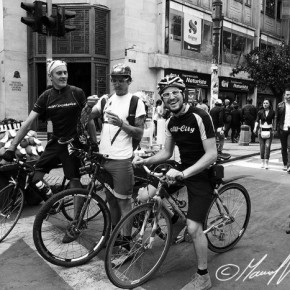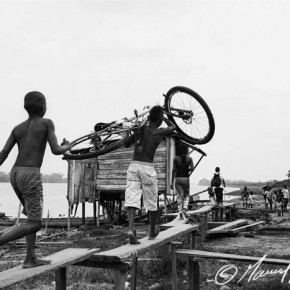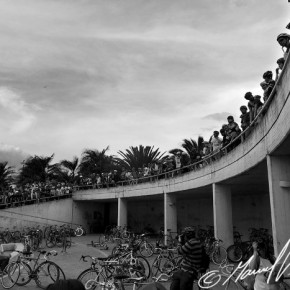A few months ago we were lucky to interview Lucas Brunelle and talk about his last great adventure, The Darien Gap, an unforgettable journey in which Lucas, Chas, Austin and Manuel, crossed jungles and rivers, knew indigenous villages, and above all, pedaled hours and hours to cross this area so dangerous that separates Panama and Colombia.
On this occasion, the photographer Manuel Vélez, tells the story in first person of what was a journey which he describes as “an once experience in a lifetime”.
DARIEN by Manuel Vélez
Last March I received a call from my friend Austin Horse and asked me if I wanted to join him, Chas Christiansen and Lucas Brunelle on a bike trip through Panama and Colombia. Without asking too much detail, I said: “yes”.
Then, Lucas called me, who gave me more information. The idea was to cross a jungle between Panama and Colombia by bike, an area that to be honest I did not know that existed. What was the first thing that came to mind? Four cyclists kidnapped by “la guerrilla”. Due to so many stories that you heard… you did not know what you had to think about. Well, it’s one of those decisions that you should not think about so much. There are so many things that can go wrong, if you turn it over in your mind, you stay at home, and that was not an option.
Lucas did his research and has been there a few months before to guide him; he managed to plan security and food, among other details. So, a few days after accepting the invitation, we arrived at Panama, rode the bikes at the airport and we started our two weeks adventure.
We left the capital to Yaviza, the last village in Panama before the Darien region. Here we spent the night and we said goodbye to the car. The next day we got up early, buy machetes and loaded all stuff in a canoe and two hours later we went canoeing upstream.
We took our bikes and took off down a dirt road like a race, having no idea where we were going to. After an hour pedaling, the road we followed ended. According to the Lucas GPS, we were just a mile from the meeting point, but there was no way of going straight due to the density of the jungle. We walked carrying the bikes for four long hours and finally we managed to meet the captain and his canoe. We continue with him upstream to the Boca de Cupe area, where we slept. That night we reflected. We had to be smarter. Being dehydrated in an unfamiliar place it’s desperate and that situation could not be repeated again during the trip.
When we got up, we continued upstream to Paya, an Indian village that was our last stop in Panama. To make our journey by bike, we asked the indigenous for the ways. Our goal was to make the greatest possible distance pedaling.
It was important to tour in the shortest time possible, avoiding as far as possible, a meeting with the Revolutionary Armed Forces of Colombia, “FARC”. Although the “guerrilla” is quite controlled, in this area, by the Panamanian army, never rule out the possibility of running into them.
After a few hours on the bike, we decided to turn to get on the boat and go upstream for ten hours. We arrived at Paya in the night and all the children of the village were running curious to us, wanting to carry our stuff.
We stayed in Paya for two nights. We wanted to have everything clear before starting the intense expected hike. We spoke to the chief of the tribe to guide us on how to get to the next town, in Colombia already.
We take our time there. In Paya there is only one bicycle which had the tires broken since several years and is owned by the son of the head. Chas, Austin and I managed to repair his bike. In gratitude, that night, his father (the head of the tribe), prepared a diner for us at home.
The indigenous tribes in Panama have military presence. There are barracks where soldiers live with shifts of three months, patrolling the area to minimize drug trafficking and the presence of the FARC. The two nights in Paya, we slept at the military base; the soldiers asked us for sleeping there because they felt responsible of us. Good people.
We left Paya early, a couple of days since our arrival. The guides we got in the village told us that the journey towards our next town (Cacarica) should take two days. However, if we reached the Colombian border before midday we could continue to try to do it before it got dark. For us it was very important to complete the trip at that time.
Although we knew that sleep in the jungle was a possibility, we wanted to try to pass that area as quickly as possible. The idea of being apprehended by the FARC was always in our mind.
The walk took us 12 hours and 30 miles of jungle for sidewalks, almost nonexistent, where migrants pass from the south seeking to reach the United States. We met a group which was escorted by Colombians with rifles. A kind of tense situation was created when one of the gunmen saw the cameras which Lucas wore on his helmet. Luckily, we were able to clarify and continue smoothly.
To hydrate, we collected standing water, trace of what had been a river. We use iodine tablets to kill bacteria so we can drink it safely.
We arrived at the Colombian border before noon, which motivated us to continue to arrive before night. Six hours later, carrying the bike and bags of 40 pounds, we got the Colombian village of Cacarica. The tribe of the area also gave us a very good reception. They cooked for us as soon as we arrived and allowed us to accommodate and sleep there.
The plan was to leave the next day, but we were very tired and I made a bad decision to wear shoes that had never been used before to walk, so I ended up with blistered feet. We decided to stay one more day to recuperate and coordinate to leave the next day, again by canoe.
In the morning we met more people from the tribe. Children played with our bikes and we throw us to the river. While we took a coffee, two armed individuals passed through the village. These had AK-47 instead of rifles. They were staring us and sat on a bench; they did not follow their way. Quickly, the tribe’s people told us that we should get out of there at that moment. They prepared everything, we got on the canoe, and when we were about to start, one of the armed men approached the captain. He made concerned face and I felt worst nightmare was about to pass. Fortunately, we were able to leave.
Ten minutes after leaving Cacarica, the engine of the canoe was damaged. We stood awhile until they managed to fix it and we could continue.
We spent hours in the canoe, pushing it when we passed by mangroves that we buried up to the waist, to get Puente América, a community on the shore of the river. We stayed there two hours and then we continued to Río Sucio.
Here ended our journey in the jungle. We turn then to the Colombian cities of Bogotá and Medellín.
I found interesting as these tribes want to the development of this road which join Colombia and Panama, which would cross Puente América. The natives defend and maintain their traditions, but want access to civilization meanwhile they try to maintain their culture and customs intact. I don’t know if this is possible. With the arrival of civilization, I think that they will lose many things that now they protect. This inaccessibility is what keeps its culture.
In Medellín and Bogotá we had mishaps with our passports and threatened to deport us. Upon entering through the jungle we didn’t pass through any passport checkpoint and when they asked us for our passports and didn’t have a Colombian entry stamp we became illegal. Nothing, that it could not be negotiable.
We ended up in Bogotá in an Alleycat race in the city, which had prepared for our arrival.
I made new friends and created stronger bonds with old friends.
An once experience in a lifetime.
Vídeo Off the grid (by Lucas Brunelle)
Some pictures of the trip:



